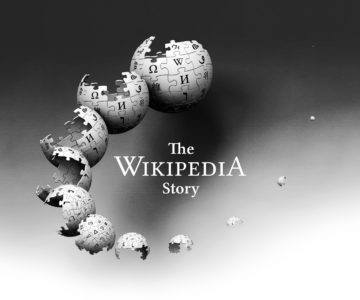Category: Recommended Reading
The New National American Elite
Michael Lind in Tablet:
 To observers of the American class system in the 21st century, the common conflation of social class with income is a source of amusement as well as frustration. Depending on how you slice and dice the population, you can come up with as many income classes as you like—four classes with 25%, or the 99% against the 1%, or the 99.99% against the 0.01%. In the United States, as in most advanced societies, class tends to be a compound of income, wealth, education, ethnicity, religion, and race, in various proportions. There has never been a society in which the ruling class consisted merely of a basket of random rich people.
To observers of the American class system in the 21st century, the common conflation of social class with income is a source of amusement as well as frustration. Depending on how you slice and dice the population, you can come up with as many income classes as you like—four classes with 25%, or the 99% against the 1%, or the 99.99% against the 0.01%. In the United States, as in most advanced societies, class tends to be a compound of income, wealth, education, ethnicity, religion, and race, in various proportions. There has never been a society in which the ruling class consisted merely of a basket of random rich people.
Progressives who equate class with money naturally fall into the mistake of thinking you can reduce class differences by sending lower-income people cash—in the form of a universal basic income, for example. Meanwhile, populists on the right tend to imagine that the United States was much more egalitarian, within the white majority itself, than it really was, whether in the 1950s or the 1850s.
Both sides miss the real story of the evolution of the American class system in the last half century toward the consolidation of a national ruling class—a development which is unprecedented in U.S. history.
More here.
Sue’s Favorite Anglo-Saxon Sword
Morandi and Albers
Peter Schjeldahl at The New Yorker:
 Imagine bits of wood trapped in eddies of a stream, going round and round atop the waters that flow beneath them. The image comes to mind in response to a surprising show—surprisingly great, contrary to my skeptical expectation—at David Zwirner’s New York gallery. The works on display are by two artists who can seem bizarrely mismatched: Josef Albers, the starchy German-American abstract painter, Yale School of Art professor, and color theorist, who died in 1976, at the age of eighty-eight, and Giorgio Morandi, the seraphic Italian still-life painter of bottles, vases, and other sorts of domestic objects, who died in 1964, at the age of seventy-three.
Imagine bits of wood trapped in eddies of a stream, going round and round atop the waters that flow beneath them. The image comes to mind in response to a surprising show—surprisingly great, contrary to my skeptical expectation—at David Zwirner’s New York gallery. The works on display are by two artists who can seem bizarrely mismatched: Josef Albers, the starchy German-American abstract painter, Yale School of Art professor, and color theorist, who died in 1976, at the age of eighty-eight, and Giorgio Morandi, the seraphic Italian still-life painter of bottles, vases, and other sorts of domestic objects, who died in 1964, at the age of seventy-three.
In 1950, Albers wedded himself to a format of three or four nested, hard-edged squares on square supports—“Homage to the Square,” he called them—centered a bit below the pictures’ vertical midpoints. That was it, for him. His occasional departures from the formula in the following years availed little.
more here.
The Art of the Cover Letter
A-J Aronstein at The Paris Review:
 For as long as we have been writing cover letters, or covering letters, and whatever preceded covering letters, writers have sought the support of those who have mastered the craft du jour. Lurie describes what he believes is the earliest example of an advertisement for how-to guides on writing “cover letters.” He says, “The first true sign that cover letters were mainstream enough to cause job applicants some anxiety was an advertisement in 1965, in the Boston Globe.” Again, it should come as no surprise, that one will find an advertisement for a how-to guide on “the covering letter” (again in the New York Times) in August 1955—more than a decade before the example that Mr. Lurie cites in the Boston Globe, and indeed much closer to the pair of Dutch Boy ads.
For as long as we have been writing cover letters, or covering letters, and whatever preceded covering letters, writers have sought the support of those who have mastered the craft du jour. Lurie describes what he believes is the earliest example of an advertisement for how-to guides on writing “cover letters.” He says, “The first true sign that cover letters were mainstream enough to cause job applicants some anxiety was an advertisement in 1965, in the Boston Globe.” Again, it should come as no surprise, that one will find an advertisement for a how-to guide on “the covering letter” (again in the New York Times) in August 1955—more than a decade before the example that Mr. Lurie cites in the Boston Globe, and indeed much closer to the pair of Dutch Boy ads.
more here.
Tuesday, January 26, 2021
Peter Singer: The Ethics of Prioritizing COVID-19 Vaccination
Peter Singer at Project Syndicate:
 One relevant fact is that people over 65 have a higher risk of dying from COVID-19 than younger people do, and those over 75 are at even higher risk.
One relevant fact is that people over 65 have a higher risk of dying from COVID-19 than younger people do, and those over 75 are at even higher risk.
Another relevant fact is that, in the United States and some other countries, members of disadvantaged racial and ethnic minorities have a lower-than-average life expectancy, and therefore are under-represented among those over 65. If we give priority to older people, the proportion who are members of those minorities will be lower than their proportion in the population as a whole. In light of the many disadvantages members of these minorities already experience, this seems unfair.
This sense of unfairness appears to motivate the suggestion by Kathleen Dooling, a public health official at the US Centers for Disease Control and Prevention, that a different approach be taken.
More here.
Sean Carroll’s Mindscape Podcast: Avi Loeb on Taking Aliens Seriously
Sean Carroll in Preposterous Universe:
 The possible existence of technologically advanced extraterrestrial civilizations — not just alien microbes, but cultures as advanced (or much more) than our own — is one of the most provocative questions in modern science. So provocative that it’s difficult to talk about the idea in a rational, dispassionate way; there are those who loudly insist that the probability of advanced alien cultures existing is essentially one, even without direct evidence, and others are so exhausted by overblown claims in popular media that they want to squelch any such talk. Astronomer Avi Loeb thinks we should be taking this possibility seriously, so much so that he suggested that the recent interstellar interloper `Oumuamua might be a spaceship built by aliens. That got him in a lot of trouble. We talk about the trouble, about `Oumuamua, and the attitude scientists should take toward provocative ideas.
The possible existence of technologically advanced extraterrestrial civilizations — not just alien microbes, but cultures as advanced (or much more) than our own — is one of the most provocative questions in modern science. So provocative that it’s difficult to talk about the idea in a rational, dispassionate way; there are those who loudly insist that the probability of advanced alien cultures existing is essentially one, even without direct evidence, and others are so exhausted by overblown claims in popular media that they want to squelch any such talk. Astronomer Avi Loeb thinks we should be taking this possibility seriously, so much so that he suggested that the recent interstellar interloper `Oumuamua might be a spaceship built by aliens. That got him in a lot of trouble. We talk about the trouble, about `Oumuamua, and the attitude scientists should take toward provocative ideas.
More here.
It turns out that striving for a unified America actually pulls us farther apart
Robert B. Talisse at ARC Digital:
 Our differences over policy are substantial, but they’re far less severe than we realize. Although we believe the country to be especially divided, we are no more at odds over policy than we were 40 years ago. This is because we tend to systematically misunderstand our oppositions’ political views.
Our differences over policy are substantial, but they’re far less severe than we realize. Although we believe the country to be especially divided, we are no more at odds over policy than we were 40 years ago. This is because we tend to systematically misunderstand our oppositions’ political views.
Our divide lies not in policy disputes and competing legislative priorities, but rather in the fact that we dislike our opponents more intensely than ever.
This means that we strongly tend to see partisan rivals as depraved, untrustworthy, immoral, misguided, and dangerous, even when it comes to behaviors that are arguably nonpolitical. Consequently, we tend to judge nearly everything those on the other side do as objectionable, even in the case of actions that we approve of when committed by our allies.
Given these conditions, we should expect Biden’s call for unity to inflame our partisan divisions. Here’s why.
More here.
John Bolton & Yanis Varoufakis debate: “Is Global Stability A Pipe Dream?”
Coronavirus has robbed me of petty annoyances
Adrian Wooldridge in MIL:
 I belong to that infuriating group of people who regard the pandemic as a blessing in disguise. No more commutes, no more trips to the office, no more dinner parties. What could be better? Some time ago I came to the conclusion that the ideal life would be conducted physically in the 21st century (not least for the dentistry) but intellectually in the 19th century – with an endless diet of Wagner, Tolstoy, George Eliot and, for light relief, Trollope and Dickens. In recent months the pandemic has brought me close to realising my dream. Yet I’ve noticed something odd tugging at my comfortable smugness: I’ve started missing the pre-pandemic world. I long for the obvious things, of course – dinners in decent restaurants, the cut-and-thrust of discussion freed from the dead hand of Zoom, travel to exotic places. But I yearn for some of the more mundane warp and weft of normal life, too. I’m loth to admit it, but I miss many of the things that used to make me angry.
I belong to that infuriating group of people who regard the pandemic as a blessing in disguise. No more commutes, no more trips to the office, no more dinner parties. What could be better? Some time ago I came to the conclusion that the ideal life would be conducted physically in the 21st century (not least for the dentistry) but intellectually in the 19th century – with an endless diet of Wagner, Tolstoy, George Eliot and, for light relief, Trollope and Dickens. In recent months the pandemic has brought me close to realising my dream. Yet I’ve noticed something odd tugging at my comfortable smugness: I’ve started missing the pre-pandemic world. I long for the obvious things, of course – dinners in decent restaurants, the cut-and-thrust of discussion freed from the dead hand of Zoom, travel to exotic places. But I yearn for some of the more mundane warp and weft of normal life, too. I’m loth to admit it, but I miss many of the things that used to make me angry.
Normal life is full of triumphs and tribulations. A few of these are big, but most are small and offer the useful purpose of marking each day out from another. Viewed collectively, they help to demarcate some moments as good, and others less so. They give form and texture to our existence.
More here.
Israel’s Early Vaccine Data Offers Hope
Isabel Kershner in The New York Times:
 JERUSALEM — Israel, which leads the world in vaccinating its population against the coronavirus, has produced some encouraging news: Early results show a significant drop in infection after just one shot of a two-dose vaccine, and better than expected results after both doses. Public health experts caution that the data, based on the Pfizer-BioNTech vaccine, is preliminary and has not been subjected to clinical trials. Even so, Dr. Anat Ekka Zohar, vice president of Maccabi Health Services, one of the Israeli health maintenance organizations that released the data, called it “very encouraging.” In the first early report, Clalit, Israel’s largest health fund, compared 200,000 people aged 60 or over who received a first dose of the vaccine to a matched group of 200,000 who had not been vaccinated yet. It said that 14 to 18 days after their shots, the partially vaccinated patients were 33 percent less likely to be infected. At about the same time, Maccabi’s research arm said it had found an even larger drop in infections after just one dose: a decrease of about 60 percent, 13 to 21 days after the first shot, in the first 430,000 people to receive it.
JERUSALEM — Israel, which leads the world in vaccinating its population against the coronavirus, has produced some encouraging news: Early results show a significant drop in infection after just one shot of a two-dose vaccine, and better than expected results after both doses. Public health experts caution that the data, based on the Pfizer-BioNTech vaccine, is preliminary and has not been subjected to clinical trials. Even so, Dr. Anat Ekka Zohar, vice president of Maccabi Health Services, one of the Israeli health maintenance organizations that released the data, called it “very encouraging.” In the first early report, Clalit, Israel’s largest health fund, compared 200,000 people aged 60 or over who received a first dose of the vaccine to a matched group of 200,000 who had not been vaccinated yet. It said that 14 to 18 days after their shots, the partially vaccinated patients were 33 percent less likely to be infected. At about the same time, Maccabi’s research arm said it had found an even larger drop in infections after just one dose: a decrease of about 60 percent, 13 to 21 days after the first shot, in the first 430,000 people to receive it.
On Monday, the Israeli Health Ministry and Maccabi released new data on people who had received both doses of the vaccine, showing extremely high rates of effectiveness. The ministry found that out of 428,000 Israelis who had received their second doses, a week later only 63, or 0.014 percent, had contracted the virus. Similarly, the Maccabi data showed that more than a week after having received the second dose, only 20 out of roughly 128,600 people, about 0.01 percent, had contracted the virus.
More here.
Tuesday Poem
Someday
They are thick with rage
and do not understand.
Someday we will forgive.
Maybe tomorrow.
Someday the weary carpenters
will lay down their tools.
Someday we will forgive.
Maybe tomorrow.
Their rage knows no mercy,
and they would have us dead,
but someday we will forgive.
Maybe tomorrow.
Maybe tomorrow.
Someday.
by Jeff Weddle
from Poetry Feast
Sean D. Kelly – Heidegger’s Being and Time (Part 1)
What We Get Wrong About Joan Didion
Nathan Heller at The New Yorker:
 Didion, now eighty-six, has been an object of fascination ever since, boosted by the black-lace renaissance she experienced after publishing “The Year of Magical Thinking” (2005), her raw and ruminative account of the months following Dunne’s sudden death. Generally, writers who hold readers’ imaginations across decades do so because there’s something unsolved in their project, something that doesn’t square and thus seems subject to the realm of magic. In Didion’s case, a disconnect appears between the jobber-like shape of her writing life—a shape she often emphasizes in descriptions of her working habits—and the forms that emerged as the work accrued. For all her success, Didion was seventy before she finished a nonfiction book that was not drawn from newsstand-magazine assignments. She and Dunne started doing that work with an eye to covering the bills, and then a little more. (Their Post rates allowed them to rent a tumbledown Hollywood mansion, buy a banana-colored Corvette Stingray, raise a child, and dine well.) And yet the mosaic-like nonfiction books that Didion produced are the opposite of jobber books, or market-pitched books, or even useful, fibrous, admirably executed books. These are strange books, unusually shaped. They changed the way that journalistic storytelling and analysis were done.
Didion, now eighty-six, has been an object of fascination ever since, boosted by the black-lace renaissance she experienced after publishing “The Year of Magical Thinking” (2005), her raw and ruminative account of the months following Dunne’s sudden death. Generally, writers who hold readers’ imaginations across decades do so because there’s something unsolved in their project, something that doesn’t square and thus seems subject to the realm of magic. In Didion’s case, a disconnect appears between the jobber-like shape of her writing life—a shape she often emphasizes in descriptions of her working habits—and the forms that emerged as the work accrued. For all her success, Didion was seventy before she finished a nonfiction book that was not drawn from newsstand-magazine assignments. She and Dunne started doing that work with an eye to covering the bills, and then a little more. (Their Post rates allowed them to rent a tumbledown Hollywood mansion, buy a banana-colored Corvette Stingray, raise a child, and dine well.) And yet the mosaic-like nonfiction books that Didion produced are the opposite of jobber books, or market-pitched books, or even useful, fibrous, admirably executed books. These are strange books, unusually shaped. They changed the way that journalistic storytelling and analysis were done.
more here.
Paintings on The Edge of Becoming and Dissolving
Sangram Majumdar interviews Catherine Haggerty at BOMB Magazine:
 SM These thoughts seem to parallel how so many aspects of your paintings live at the edge of becoming or dissolving. There’s a porousness to your world. Does this relate to the title of your show, An Echo’s Glyph, in any way?
SM These thoughts seem to parallel how so many aspects of your paintings live at the edge of becoming or dissolving. There’s a porousness to your world. Does this relate to the title of your show, An Echo’s Glyph, in any way?
CH I teach a Non-European Art Histories class at the School of Visual Arts, and we spend four weeks on Indigenous art and ledger drawing. I have been studying glyphs as a structure to hold meaning and identity. I love the way they float above the protagonist’s head in ledger drawings. I’ve begun to wonder how I can make my own and reference this beautiful and intelligent history in my work. An echo in itself is ephemeral, and it is fleeting. So for an echo to have a glyph, an identity marker actually seems impossible, which interested me for the title of the show. For me, glyphs get created through movement, through work, and through time, whereas Indigenous glyphs are specific and used for identification in pictographs. Ledger glyphs have to be specific, but mine are open and ambiguous which speaks to your comment about the work being porous. Each form has its own life, its own energy; they hover in space and are autonomous, not always connected to a character.
more here.
Sunday, January 24, 2021
Could a Radical New Economic Theory Amsterdam is embracing, to Help Save the Environment, replace capitalism?
Ciara Nugent in Time:
 In April 2020, during the first wave of COVID-19, Amsterdam’s city government announced it would recover from the crisis, and avoid future ones, by embracing the theory of “doughnut economics.” Laid out by British economist Kate Raworth in a 2017 book, the theory argues that 20th century economic thinking is not equipped to deal with the 21st century reality of a planet teetering on the edge of climate breakdown. Instead of equating a growing GDP with a successful society, our goal should be to fit all of human life into what Raworth calls the “sweet spot” between the “social foundation,” where everyone has what they need to live a good life, and the “environmental ceiling.” By and large, people in rich countries are living above the environmental ceiling. Those in poorer countries often fall below the social foundation. The space in between: that’s the doughnut.
In April 2020, during the first wave of COVID-19, Amsterdam’s city government announced it would recover from the crisis, and avoid future ones, by embracing the theory of “doughnut economics.” Laid out by British economist Kate Raworth in a 2017 book, the theory argues that 20th century economic thinking is not equipped to deal with the 21st century reality of a planet teetering on the edge of climate breakdown. Instead of equating a growing GDP with a successful society, our goal should be to fit all of human life into what Raworth calls the “sweet spot” between the “social foundation,” where everyone has what they need to live a good life, and the “environmental ceiling.” By and large, people in rich countries are living above the environmental ceiling. Those in poorer countries often fall below the social foundation. The space in between: that’s the doughnut.
Amsterdam’s ambition is to bring all 872,000 residents inside the doughnut, ensuring everyone has access to a good quality of life, but without putting more pressure on the planet than is sustainable.
More here.
The mathematical case against blaming people for their misfortune
David Kinney in Psyche:
 Kenny Chow was born in Myanmar, and moved to New York City in 1987. He worked for years as a diamond setter for a jeweller, earning enough to buy a house for his family before he was laid off in 2011. At that point, Chow decided to become a taxi driver like his brother, scraping together financing to buy a taxi medallion for $750,000. This allowed him to operate as a sole proprietor, with the medallion as an asset.
Kenny Chow was born in Myanmar, and moved to New York City in 1987. He worked for years as a diamond setter for a jeweller, earning enough to buy a house for his family before he was laid off in 2011. At that point, Chow decided to become a taxi driver like his brother, scraping together financing to buy a taxi medallion for $750,000. This allowed him to operate as a sole proprietor, with the medallion as an asset.
For a while, everything went according to plan, with taxi medallions rising in value to more than $1 million. Then the bubble burst, and along came ridesharing apps such as Lyft and Uber. The value of Chow’s medallion plummeted, and it became harder to keep up the payments on his loan. In 2018, he took his own life.
We’d all recognise that Chow’s situation is unfortunate. But, arguably, he took a calculated gamble when he purchased a risky asset, and so some of us might be tempted to blame him for his own misfortune. According to one school of thought, when these sorts of bets don’t pan out, only the gambler is to blame. That might sound callous, but it’s indeed the attitude that many of us seem to hold, at least in the United States: a 2014 Pew Research report found that 39 per cent of Americans believed that poverty was due to a lack of effort on poor people’s part. When ‘effort’ includes an inability to properly weigh up the risks inherent in a decision, this suggests that, in the end, many of us think that people are responsible for their own bad luck.
I disagree with this view.
More here.
Julian Savulescu & Sam Vanderslott debate the arguments for and against Mandatory COVID-19 vaccination
An Oral History of Wikipedia
Tom Roston in OneZero:
 Wikipedia was launched as the ugly stepsibling of a whole other online encyclopedia, Nupedia. That site, launched in 1999, included a rigorous seven-step process for publishing articles written by volunteers. Experts would check the information before it was published online — a kind of peer-review process — which would theoretically mean every post was credible. And painstaking. And slow to publish.
Wikipedia was launched as the ugly stepsibling of a whole other online encyclopedia, Nupedia. That site, launched in 1999, included a rigorous seven-step process for publishing articles written by volunteers. Experts would check the information before it was published online — a kind of peer-review process — which would theoretically mean every post was credible. And painstaking. And slow to publish.
“It was too hard and too intimidating,” says Jimmy Wales, Nupedia’s founder who is now, of course, better known as the founder of Wikipedia. “We realized… we need to make it easier for people.”
Now 20 years later — Wikipedia’s birthday is this Friday — nearly 300,000 editors (or “Wikipedians”) now volunteer their time to write, edit, block, squabble over, and scrub every corner of the sprawling encyclopedia. They call it “the project,” and they are dedicated to what they call its five pillars: Wikipedia is an encyclopedia; Wikipedia is written from a neutral point of view; Wikipedia is free content that anyone can use, edit, and distribute; Wikipedia’s editors should treat each other with respect and civility; and Wikipedia has no firm rules.
More here.
Sunday Poem
The Kitchen Gods
Carnage in the lot: blood freckled the chopping block —
The hen’s death is timeless, frantic.
Its numbskull lopped, one wing still drags
The pointless circle of a broken clock,
But the vein fades in my grandmother’s arm on the ax.
The old ways fade and do not come back.
The sealed aspirin does not remember the willow.
The supermarket does not remember the barnyard.
The hounds of memory come leaping and yapping.
One morning is too large to fit inside the mouth.
My grandmother’s life was a long time
Toiling between Blake’s root and lightning
Yahweh and the girlish Renaissance Christ
That plugged the flue in her kitchen wall.
Early her match flamed across the carcass.
Her hand, fresh from the piano, plunged
The void bowel and set the breadcrumb heart.
The stoves eye reddened. The day’s great spirit rose
From pies and casseroles. That was the house —
Reroofed, retiled, modernized, and rented out,
It will not glide up and lock among the stars.
The tenants will not find the pantry fully stocked
Or the brass boat where she kept the matches dry.
I find her stone and rue our last useless
Divisive arguments over the divinity of Christ.
Only where the religion goes on without a God
And the sandwich is wolfed down without blessing,
I think of us bowing at the table there:
The grand patriarch of the family holding forth
In staunch prayer, and the potato pie I worshipped.
The sweeter the pie. The shorter the prayer.
by Rodney Jones
from Transparent Gestures
Houghton Mifflin 1989
